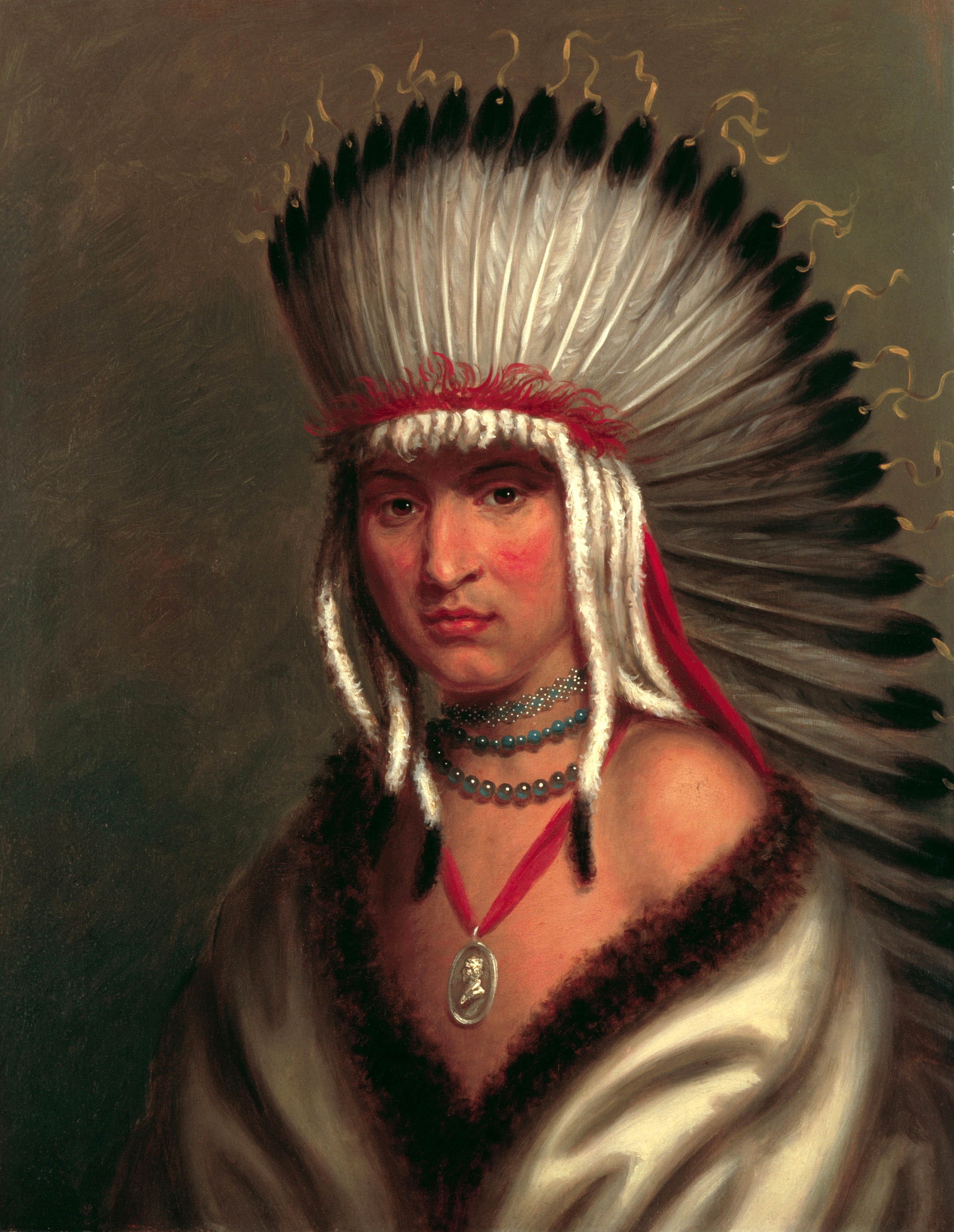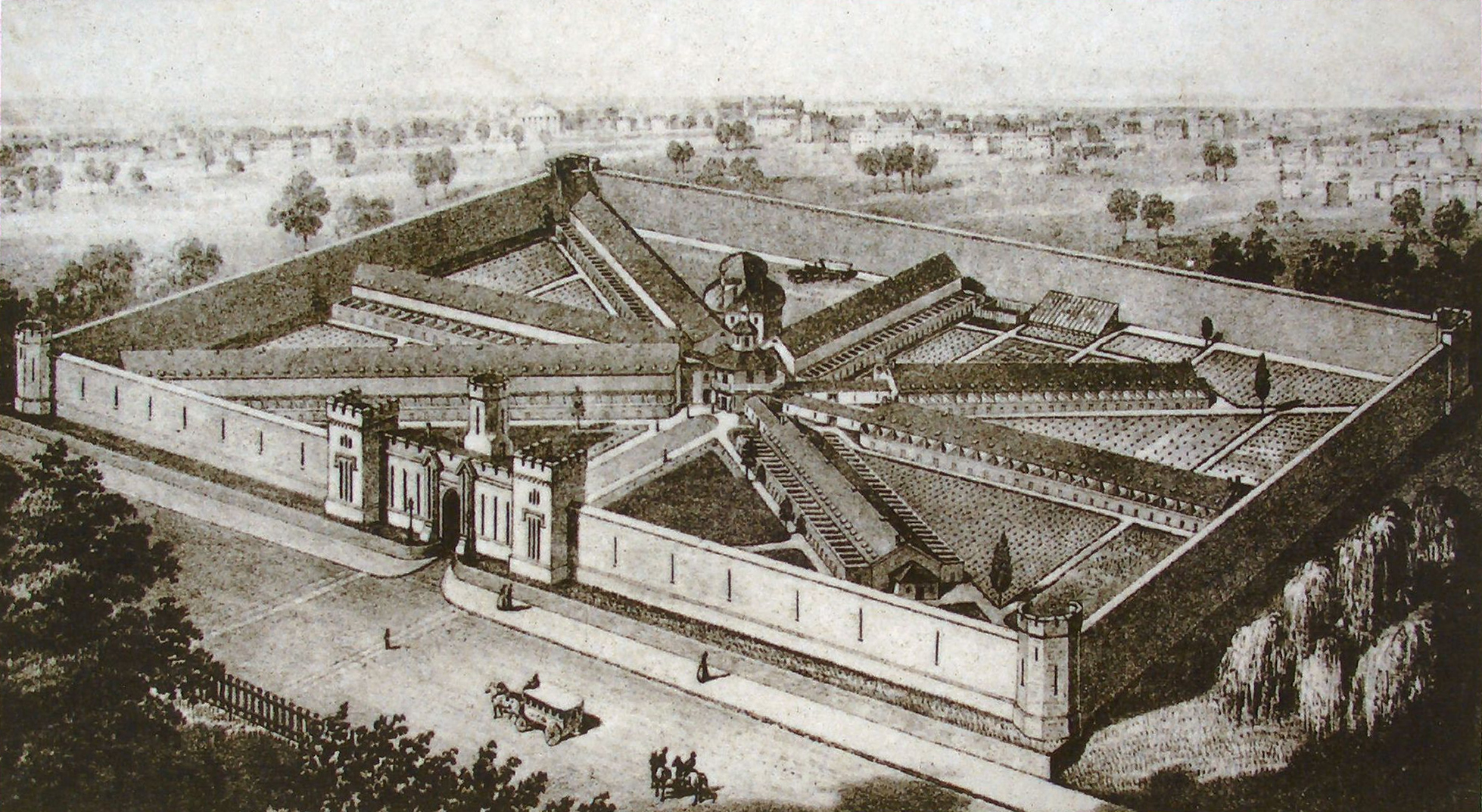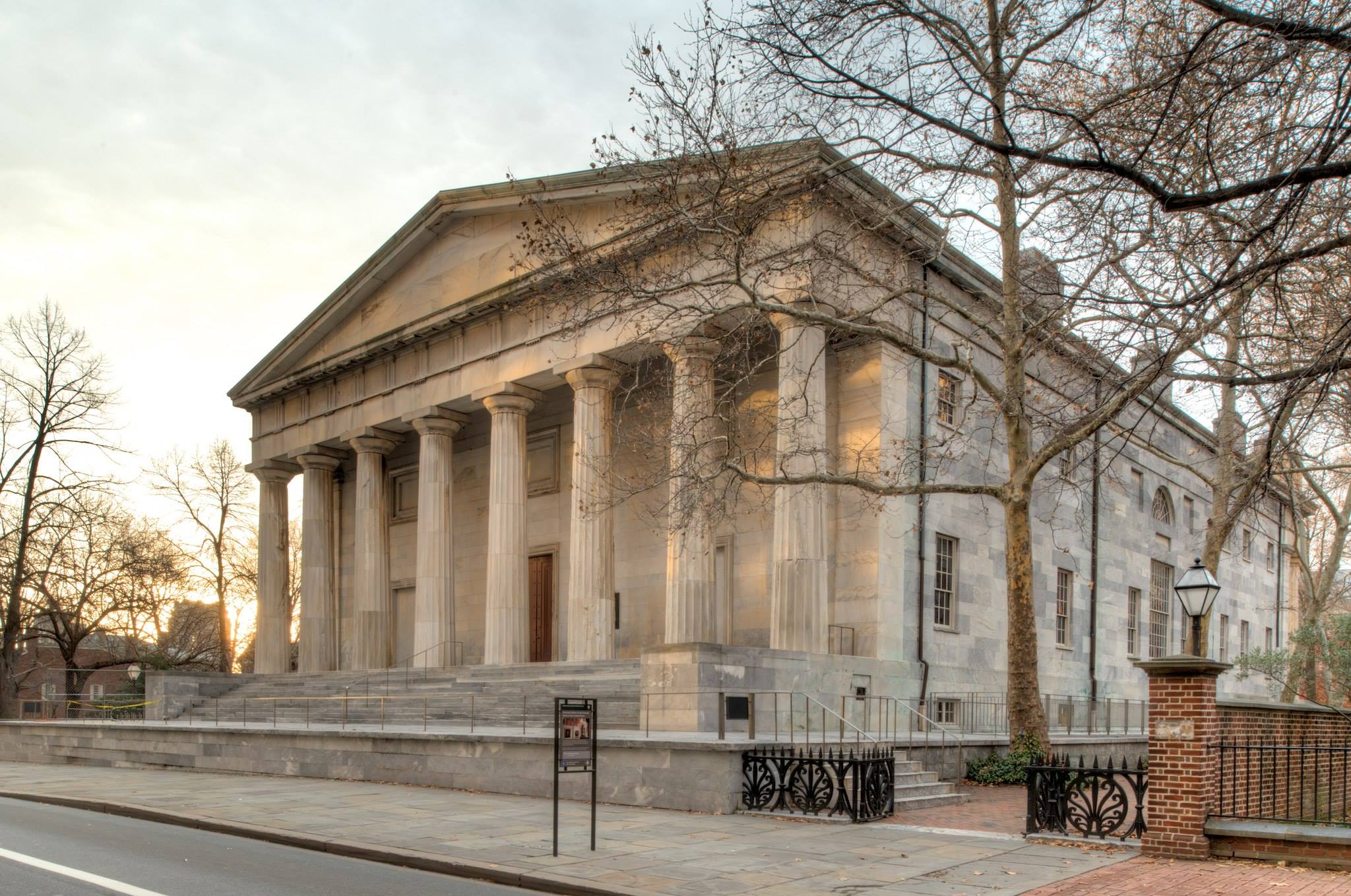|
John Neagle
John Neagle (November 4, 1796 – September 17, 1865) was a fashionable American painter, primarily of portraits, during the first half of the 19th century in Philadelphia. Biography Neagle was born in Boston, Massachusetts. His training in art began with instruction from the drawing-master Pietro Ancora and an apprenticeship to Thomas Wilson, a well-connected painter of signs and coaches in Philadelphia. Wilson introduced him to the painters Bass Otis and Thomas Sully, and Neagle became a protégé of the latter. In 1818 Neagle decided to concentrate exclusively on portraits, setting up shop as an independent master. Aside from brief sojourns in Lexington, Kentucky, and New Orleans, Louisiana, he spent his career in Philadelphia, Pennsylvania, where he died. In May 1826 he married Sully's stepdaughter Mary, and for a time the son-in-law and father-in-law dominated the field of portraiture in the city. Neagle served as Director of the Pennsylvania Academy of the Fine Art ... [...More Info...] [...Related Items...] OR: [Wikipedia] [Google] [Baidu] |
Bass Otis
Bass Otis (July 17, 1784 - November 3, 1861), was an early American artist, inventor, and portrait painter. He painted hundreds of portraits including many of the best known Americans of his day, and produced the first American lithograph in 1819. Life and work Otis was born in East Bridgewater, Massachusetts, the son of Josiah Otis, a physician, and Susanna Orr. As a youth, he may have been apprenticed to a scythe maker, perhaps to a relative. Later he worked as a coach painter, then studied with Gilbert Stuart in Boston about 1805-1808. Otis then moved to New York City, perhaps working as an assistant to painter John Wesley Jarvis. When he moved to Philadelphia, Pennsylvania in 1812, his painting career flourished. He was elected to the Society of Artists of the United States in 1812, and eight of his portraits were included in the combined exhibition of the Society of Artists and the Pennsylvania Academy of the Fine Arts. He was elected an academician in the Pennsylvania Aca ... [...More Info...] [...Related Items...] OR: [Wikipedia] [Google] [Baidu] |
Richard Mentor Johnson
Richard Mentor Johnson (October 17, 1780 – November 19, 1850) was an American lawyer, military officer and politician who served as the ninth vice president of the United States, serving from 1837 to 1841 under President Martin Van Buren. He is the only vice president elected by the United States Senate under the provisions of the Twelfth Amendment. Johnson also represented Kentucky in the U.S. House of Representatives and Senate. He began and ended his political career in the Kentucky House of Representatives. Johnson was elected to the House of Representatives in 1806 in the early Federal period. He became allied with fellow Kentuckian Henry Clay as a member of the War Hawks faction that favored war with Britain in 1812. At the outset of the War of 1812, Johnson was commissioned a colonel in the Kentucky Militia and commanded a regiment of mounted volunteers from 1812 to 1813. He and his brother James served under William Henry Harrison in Upper Canada. Johnson led tro ... [...More Info...] [...Related Items...] OR: [Wikipedia] [Google] [Baidu] |
Historical Society Of Pennsylvania
The Historical Society of Pennsylvania is a long-established research facility, based in Philadelphia. It is a repository for millions of historic items ranging across rare books, scholarly monographs, family chronicles, maps, press reports and varied ephemera, reaching back almost 300 years, and accessible on the society’s website. Mission The Historical Society of Pennsylvania is a historical society founded in 1824. Membership was regulated by the statutory of the Association. In particular, article IV stated that "the members of the Historical Society of Pennsylvania shall be deemed qualified voters at the meetings and elections, who have subscribed to the Constitution, and who have paid all their dues to the Society". The society houses some 600,000 printed items and over 19 million manuscript and graphic items. The Society maintains printed collections on Pennsylvania and regional history and manuscript collections covering 17th, 18th, and 19th century history. The holdi ... [...More Info...] [...Related Items...] OR: [Wikipedia] [Google] [Baidu] |
Petalesharo
Petalesharo (c. 1797 – c. 1836) was a Skidi Pawnee chief or brave who rescued an "Ietan" girl, that is Comanche girl,Thurman, Melburn D.: "The Timing of the Skidi-Pawnee Morning Star " ''Ethnohistory'', Vol. 30 (1983), No. 3, pp. 155-163. from a ritual human sacrifice around 1817 (in present-day Nebraska) and earned publicity for his act in national newspapers. In 1821, he was one of numerous Great Plains tribal chiefs to go to Washington, D.C. as part of the O'Fallon Delegation where they met President James Monroe. History As was their traditional practice, the Skidi Pawnee had captured an enemy girl to sacrifice her as part of the spring equinox Morning Star ceremony. They would care well for her before the sacrifice in the weeks or months beforehand.Ralph Linton, "The origin of the Pawnee Morning Star Sacrifice", ''American Anthropologist'' (New Series) Vol 28, No 3 (July 1926), pp. 457–466 Petalesharo's father Knife Chief (''Lachelasharo'') opposed the ceremony, but ... [...More Info...] [...Related Items...] OR: [Wikipedia] [Google] [Baidu] |
Thomas Ustick Walter
Thomas Ustick Walter (September 4, 1804 – October 30, 1887) was an American architect of German descent, the dean of American architecture between the 1820 death of Benjamin Latrobe and the emergence of H.H. Richardson in the 1870s. He was the fourth Architect of the Capitol and responsible for adding the north (Senate) and south (House) wings and the central dome that is predominantly the current appearance of the U.S. Capitol building. Walter was one of the founders and second president of the American Institute of Architects. In 1839, he was elected as a member to the American Philosophical Society. Early life Born in 1804 in Philadelphia, Walter was the son of mason and bricklayer Joseph S. Walter and his wife Deborah. Walter was a mason's apprentice to his father. He also studied architecture and technical drawing at the Franklin Institute. Walter received early training in a variety of fields including masonry, mathematics, physical science, and the fine arts. At 15, ... [...More Info...] [...Related Items...] OR: [Wikipedia] [Google] [Baidu] |
John Haviland
John Haviland (15 December 1792 – 28 March 1852) was an English-born American architect who was a major figure in American Neo-Classical architecture, and one of the most notable architects working from Philadelphia in the 19th century. Biography Born 15 December 1792, at Gundenham, near Wellington, England, Haviland was apprenticed in 1811 to a London architect. In 1815 he unsuccessfully pursued an appointment to the Russian Imperial Corps of Engineers. In Russia, however, he met George von Sonntag and John Quincy Adams, who encouraged him to work in the United States. He arrived in Philadelphia in 1816, and soon established himself as one of the few professional architects in the city. By 1818, Haviland produced a book, ''The Builder's Assistant'', which appeared in three volumes over several years. This publication was one of the earliest architectural pattern books written and published in North America, and likely the first to include Greek and Roman classical orders. ... [...More Info...] [...Related Items...] OR: [Wikipedia] [Google] [Baidu] |
William Strickland (architect)
William Strickland (November 1788 – April 6, 1854), was a noted architect and civil engineer in Philadelphia, Pennsylvania, and Nashville, Tennessee. A student of Benjamin Latrobe and mentor to Thomas Ustick Walter, Strickland helped establish the Greek Revival movement in the United States. A pioneering engineer, he wrote a seminal book on railroad construction, helped build several early American railroads, and designed the first ocean breakwater in the Western Hemisphere. He was elected as a member of the American Philosophical Society in 1820. Life and career Strickland was born in the Navesink section of Middletown Township, New Jersey, and moved with his family to Philadelphia as a child. In his youth, he was a landscape painter, illustrator for periodicals, theatrical scene painter, engraver, and pioneer aquatintist. His Greek Revival designs drew much inspiration from the plates of ''The Antiquities of Athens''. Strickland and Latrobe competed to design the Second Bank ... [...More Info...] [...Related Items...] OR: [Wikipedia] [Google] [Baidu] |
Edwin Forrest
Edwin Forrest (March 9, 1806December 12, 1872) was a prominent nineteenth-century American Shakespearean actor. His feud with the British actor William Macready was the cause of the deadly Astor Place Riot of 1849. Early life Forrest was born in Philadelphia, Pennsylvania, the son of Rebecca (''née'' Lauman) and William Forrest. His father, a Scottish merchandise peddler, moved from Dumfriesshire to Trenton, New Jersey in 1791. His mother was a member of an affluent German-American family. A business setback led William to relocate to Philadelphia, where he married Rebecca and was able to secure a position with a local branch of the United States Bank. As boys, Forrest and his brother William joined a local juvenile thespian club and participated in theatrical performances staged in a sparsely decorated woodshed. At the age of 11, Forrest made his first appearance on the legitimate stage at Philadelphia's South Street Theatre, playing the female role Rosalia de Borgia in the ... [...More Info...] [...Related Items...] OR: [Wikipedia] [Google] [Baidu] |
Gilbert Stuart
Gilbert Charles Stuart ( Stewart; December 3, 1755 – July 9, 1828) was an American painter from Rhode Island Colony who is widely considered one of America's foremost portraitists. His best-known work is an unfinished portrait of George Washington, begun in 1796, which is sometimes referred to as the ''Athenaeum Portrait''. Stuart retained the portrait and used it to paint scores of copies that were commissioned by patrons in America and abroad. The image of George Washington featured in the painting has appeared on the United States one-dollar bill for more than a centuryGilbert Stuart Birthplace and Museum . ''Gilbert Stuart Biography''. Accessed July 24, 2007. and on various |
James Fenimore Cooper
James Fenimore Cooper (September 15, 1789 – September 14, 1851) was an American writer of the first half of the 19th century, whose historical romances depicting colonist and Indigenous characters from the 17th to the 19th centuries brought him fame and fortune. He lived much of his boyhood and the last fifteen years of life in Cooperstown, New York, which was founded by his father William Cooper (judge), William Cooper on property that he owned. Cooper became a member of the Episcopal Church (United States), Episcopal Church shortly before his death and contributed generously to it. He attended Yale University for three years, where he was a member of the Linonian Society.#Lounsbury, Lounsbury, 1883, pp. 7–8 After a stint on a commercial voyage, Cooper served in the U.S. Navy as a midshipman, where he learned the technology of managing sailing vessels which greatly influenced many of his novels and other writings. The novel that launched his career was ''The Spy (Cooper nov ... [...More Info...] [...Related Items...] OR: [Wikipedia] [Google] [Baidu] |
William Potts Dewees
William Potts Dewees (May 5, 1768 – May 18, 1841) was an American physician, best known for his work in obstetrics, being described in American Medical Biographies as a "Philadelphian obstetrician hatwas so famous that no parturient woman of the time considered herself safe in other hands." Dewees received a Bachelor of Medicine and in 1806 an M.D. from the Department of Medicine at the University of Pennsylvania, where he would become Professor of Obstetrics, and Chair of Obstetrics from 1834 to 1841. In 1819, Dewees was elected to the American Philosophical Society. His fame comes mainly from three books published in quick succession in the mid-1820s, each of which went to at least ten editions: ''Compendious System of Midwifery'' (1824), ''Treatise on the Physical and Medical Treatment of Children'' (1825), and ''Treatise on the Diseases of Females'' (1826). Of these, the ''System of Midwifery'' had the most lasting influence, introducing ideas from British and continental ... [...More Info...] [...Related Items...] OR: [Wikipedia] [Google] [Baidu] |
William Meade
William Meade (November 11, 1789March 14, 1862) was an American Episcopal bishop, the third Bishop of Virginia. Early life His father, Colonel Richard Kidder Meade (1746–1805), one of George Washington's aides during the War of Independence, after the conflict ended sold his estate at Coggins Point on the James River near Henricus and bought 1000 acres and moved the family to the Shenandoah Valley. Thus, William Meade was born on November 11, 1789, at ' Meadea' near White Post, then grew up at Lucky Hit plantation in Frederick County but now Clarke County, Virginia. an''Accompanying photo''/ref> Both are listed on the National Register of Historic Places. The boy was home-schooled until he was ten, then sent to a school run by Rev. Wiley on the estate of Nathaniel Burwell. Rather than attend the College of William and Mary in Virginia, which some considered irreligious by the time, young Meade and his fellow student William H. Fitzhugh entered the college of New Jersey (la ... [...More Info...] [...Related Items...] OR: [Wikipedia] [Google] [Baidu] |
.jpg)








